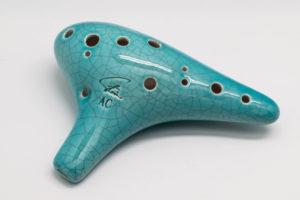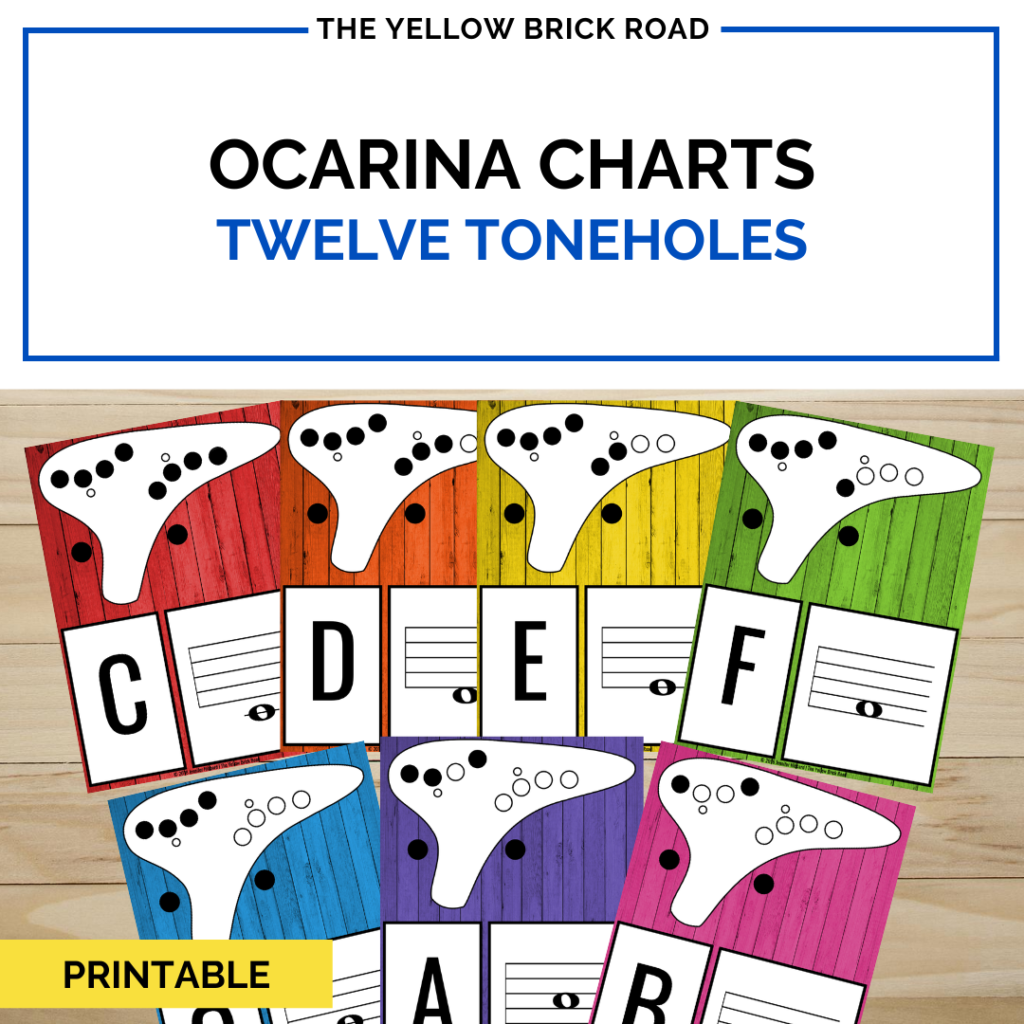Recorders are a staple in most elementary music classrooms. In fact, they’ve been used as beginner instruments for so long, that many of our parents and grandparents remember playing them as children. It’s clear to see why; recorders have obvious advantages as a beginner instrument. However, I encourage you to take a step out of the box with me for just a moment to consider a different instrument; the ocarina.

The ocarina (ah-kuh-ree-nuh) belongs to the flute family and dates back over 12,000 years. They can have as few as four tone holes (pendant ocarinas) or as many as 12 or more (multi-chambered ocarinas). After playing the ocarina and learning more about it, I became convinced that it would be a good option for the elementary music classroom. So I reached out to STLOcarina, the company from which I’d purchased my ocarina. They connected me with a music teacher, Nicolas Ramirez, who implemented the ocarina in his own elementary music classes.
Nicolas has a Bachelor of Music with teaching certification and has completed level three Kodály and level one Orff. He’s been using ocarinas in his classroom since 2016. He also has a website and Youtube channel dedicated to the ocarina, featuring tons of helpful tutorials for yourself and your students. You can visit his website HERE.
1. What inspired you to try ocarinas in the elementary music classroom?
My students were really struggling with getting a good sound on the recorder. I came across ocarina while researching methods for them to be more successful and alternatives.
2. How do ocarinas compare to recorders? What are the benefits and/or disadvantages?
Students in my opinion prefer the sound of the ocarina than the recorder. With recorder there’s always been a lot of frustration for not being able to get the embouchure correctly. I’ve had lots of students be successful on recorders, but the ones that were very successful on recorder, actually went above and beyond on ocarina. The advantages of the ocarina is that it’s easier to get a sound and the fingering is more ergonomic. The disadvantages are that the ocarina cannot do dynamics such as forte or piano. The recorder can do dynamics but it’s much harder for a beginner to get a sound. A beginner can get a sound on the first day with the ocarina.
3. How did your students react to ocarinas? Are they more successful or engaged with the ocarinas as compared to other traditional instruments (such as the recorder)?
Students definitely have a higher level of engagement and enthusiasm. I can measure this by our big school celebration that we do every year in March. Students definitely get more excited the more goals they can achieve with the instrument.
4. How has the community reacted to the introduction of ocarinas? Were parents, staff, and administration supportive?
At first nobody knew what they were and there was hesitation because nobody’s ever seen them before, but after the first year everyone’s been incredibly supportive. My administration has been very supportive along with the parents at my school.
5. One unique aspect to the ocarina, is that you have to hold down your left pinky for most notes. How do you help students to remember this, and do you have any clever hacks to suggest?
Sometimes the easiest thing is to put a sticker on the note. I do start with 4th and 5th grade using the 12 hole ocarina. They have fingers that are wide enough usually to cover that hole, so I’ve never needed to use that method very much. I did at the beginning and it helped the students be more aware of their finger placement.
6. What curriculum do you use to teach ocarina? If you used recorders previously, were you able to modify that curriculum easily to work for the ocarina?
I use my own curriculum which is a merge between Kodály and STL’s ocarina curriculum. I definitely refer to fingering charts a lot and we learn songs sequentially. We start with the ocarina in 2nd and 3rd grade. We actually use the 6 hole ocarina first then we move on to the 12 hole in 4th and 5th grade.
7. Do you feature ocarinas in concerts or other public performances? If so, how does that typically look?
Ocarinas are featured in my after school club called “Order of the Ocarina.” We play concerts at different community events. Sometimes the group is small, sometimes it’s big but we always have a lot of fun. Our performances involve ocarina, xylophones and sometimes percussion.
8. How do you teach students to maintain their instruments?
Since the ocarinas are plastic I encourage my students to regularly clean them at least once every two weeks. My students are aware that cleaning an ocarina is sanitary and should be done often. They also understand the different ways to clean it such as soap and water, sanitizing spray and so on. My students also care for their instruments by keeping them in boxes or cases.
I’m incredibly grateful to Nicolas for sharing his experiences with all of us today. I hope you all are as inspired by the idea of implementing ocarinas as I’ve been. If you’d like to learn more about ocarinas or see the different varieties available, you can check out STLOcarina’s website HERE.
Don’t forget to check out Nicolas’ website, which has a treasure trove of tutorials and resources for the elementary music classroom. You can follow his website HERE.
I was so inspired by these instruments, that I decided to create some colorful fingering charts for teachers and students. You can download them by clicking HERE or on the image below.

